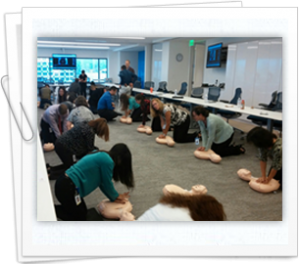Online CPR Certification Blog
Information about STEMI Tx, kids’ cholesterol and Bystander CPR
Date: November 16th, 2014

Even without HF, eplerenone might help
After suffering an acute ST segment elevation myodcardial infarction, giving epleronone early enough when heart failure is absent has been found to be beneficial especially in reducing the level of natriuretic peptide in the brain. This was showed by a randomized REMINDER trial. After an average follow up of 10.5 months, the patients having epleronone group vs. those with placebo showed a much lower rate of having composite cardiovascular mortality, extended hospital stay or re-hospitalization after being diagnosed with heart failure, fibrillation or sustained ventricular tachycardia or a 40 percent ejection fraction or even a lower one.
The only component however of the endpoint that improved significantly by epleronone was elevation of the levels of BNP/ NT- proBnp. The researchers wrote that there was need to have a larger randomized trial that would finally help assess the role played by mineralocortocoid receptor antagonist therapy for patients with acute STEMI and not those with a complicated heart failure. Even though it is recommended that patients use mineralocorticoid receptor antagonists after an MI, using them among patients without heart failure problem is yet to be established and this formed a rationale why the REMINDER trial was important. In a trial involving 1012 patients, the epleronone was actually given within a period of 24 hours after the STEMI and all the patients got standard therapy.
The study showed that the patients had a good tolerance for the drug and for the eplerenone group; there was less frequency of hypokalemia.
Most kids don’t have their cholesterol tested
Only very few adolescents and children are today going through cholesterol testing during their health maintenance visits as the researchers found out. For the visits that had occurred between 1995 and 2010, only about 3.4 percent of them for patients aged between 2 and 21 years had included testing for cholesterol and the rate had only slightly risen over time.
The issue was examined because there were some conflicting recommendations on this practice. The researchers never found any sufficient evidence that would necessitate recommending against or for pediatric lipid screening. In their efforts of exploring exactly what was taking place in practice, the researchers examined data from patients who had visited internal medicine, family medicine clinician or a pediatrician for health maintenance. Their findings showed that the rate for cholesterol testing was very low and they noted that 35 percent of the patients were eligible for testing depending on their age going by the 2009 census data in U.S. There was less likelihood of getting the tests after the AAP and USPSTF released their statements. This perhaps shows how the organizations were in such a conflicting position, noted the authors.